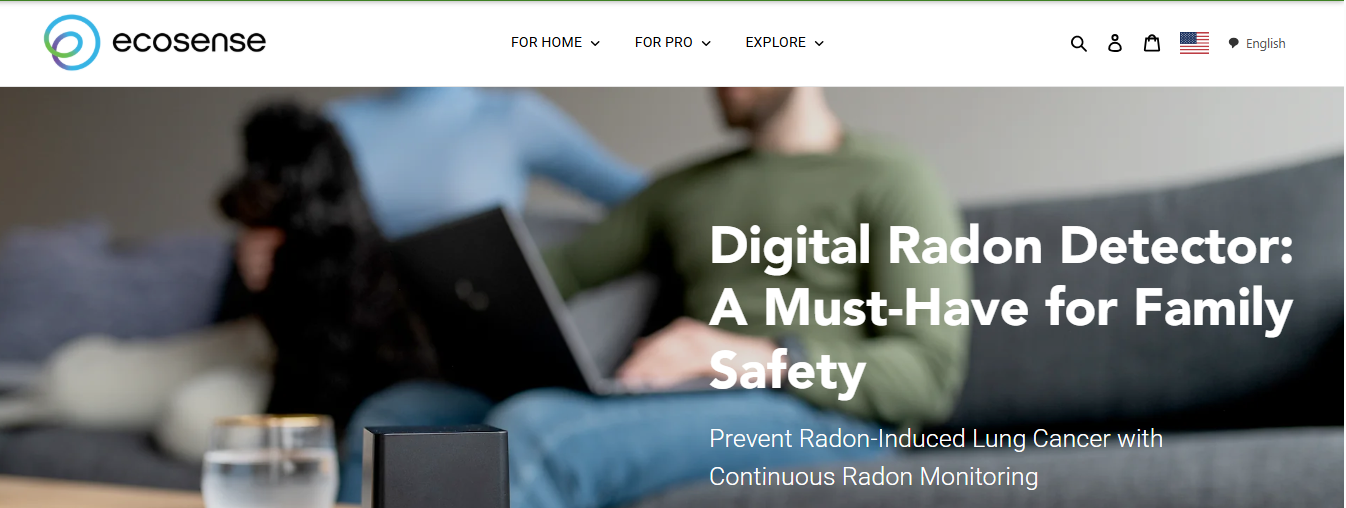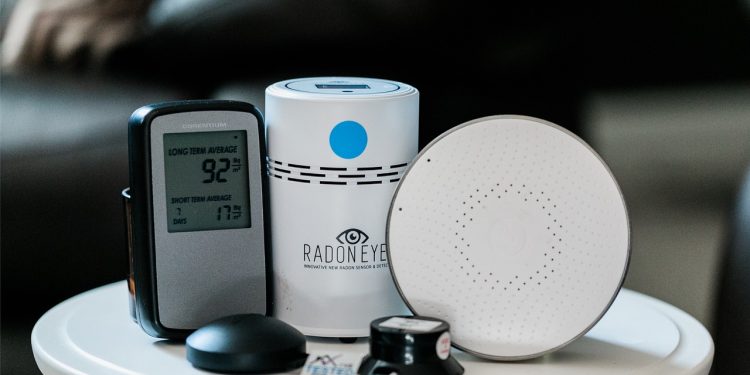Radon is a naturally occurring radioactive gas that can be found in high concentrations in indoor environments, such as homes and workplaces. It is an odorless and invisible gas that can lead to lung cancer. In Texas and other regions of the United States, the odorless, but toxic gas has become a headache for both homeowners, businesses and owners of commercial spaces.
A leading misconception about radon is that there are particular types of buildings and structures more likely to contain this cancer causing gas. The fact is that no region or city is immune from having high concentrations of radon gas.
Even in Texas, commercial and residential properties are plagued by this hard to detect gas. On average, radon gas levels in Texas homes and businesses are normally lower than other parts of the U.S., but higher concentrations of the gas can still exceed the EPA recommended limit of 4 pCi/L.
“Elevated indoor radon levels can occur in old and new houses and those with basements, vented crawl spaces, or slab-on-grade foundations. High indoor radon can also be found in schools, workplaces, multifamily buildings, and in any state or county,” said Ksenia Kolyeva, Head of Marketing at Ecosense. “The only way to know is to test a specialized radon detector since radon is scentless and physically can’t be seen.”
According to Kolyeva, the most alarming aspect of radon is that it’s not easily detected or smelled.
“Radon is a radioactive gas that is completely undetectable by human senses and it has no smell, color, or taste. The only way to know if it’s present in your home is through testing. Radon detectors like EcoQube or EcoBlu by Ecosense are easy-to-use, real-time monitors powered with patented high-accuracy ion chamber detection technology and processing software. These devices provide radon detection results in minutes instead of days, with readings available directly on the device’s display or through the mobile app—eliminating the need to wait for a lab to analyze and mail your test results.”
Ecosense was founded in 2019 by its CEO Insoo Park after losing his best friend to cancer. This personal loss made Insoo move into the radon measurement business space to address the risks associated with radon exposure. Today, the company’s mission is to reduce lung cancer deaths caused by radon through early detection and proper mitigation. How Radon Enters Homes
How Radon Enters Homes
Radon can enter a home or workplace through cracks and openings on the floor or foundation since the primary source of the gas comes from the soil and rock on which a building stands. Radon gas is created when uranium decays and is released into the air.
“If your home or workplace is built on soil or rock that has radium, then the radon it produces can be drawn through the ground toward your foundation. Radon enters buildings through even the tiniest cracks, gaps, and openings in the foundation, walls, or slab. These can be on concrete floors, walls, joints, and building structure connections. If the building gets its water from a well, radon can also be brought indoors through the water supply, especially if the well is in an area with high radon levels in the ground,” said
Common ways radon enters the building is via the sewer lines, through the sump pump pit, or any other vent openings. There is also a possibility of radon emanating from the building materials, including certain types of stone or concrete.
Percentages of U.S. homes or buildings impacted by radon
Radon exists in every house or structure to some extent, but the levels can differ depending on the building’s location and construction. Nationwide it’s estimated that about 1 in 15 homes in the U.S. have elevated radon levels (over the EPA’s action level of 4 picocuries per liter of air, or pCiL).
Radon levels are generally higher in some regions due their geography. Regions with high levels of uranium or rocky ground are more likely to have radon problems. The Northeast, Midwest, and some of the Rocky Mountains are especially vulnerable to higher levels.
Houses or other structures listed in high-risk areas are more likely to have elevated radon levels. The EPA has maps available to assist in determining which regions are at a greater risk. However, the EPA clearly states that the Map of Radon Zones should not be the only determining factor when deciding whether a building or home needs to be tested.
Luxury real estate is not immune
Real estate professionals across the board are seeing a rise in radon gas levels, even within the luxury market. Wesley Kang, Founder of Realtor 1099Cafe, says luxury property sales are feeling the impact.
“We are handling luxury deals across Los Angeles. I’m watching radon issues impact transactions in ways most agents never discuss.Though everyone thinks modern homes are immune, I’m seeing some of our newest properties show the highest readings. Just had a $4 million Beverly Hills listing fail inspection because the smart home’s sealed envelope system was actually trapping radon. The fancy ventilation setup created negative pressure that pulled more gas from the ground and that’s why I tell buyers now: newer isn’t always safer,” explained Kang.
Kang explained that smart buyers are now using radon tests as major negotiation tools. “
A client discovered high levels in a Pasadena property but instead of walking away, we used it to acquire the home at $200,000 under market because we knew mitigation costs would run $25,000 max,” continued Kang. “The mitigation game looks totally different now though. I’m seeing clients install integrated systems that handle both radon and overall air quality. A client recently put in a whole-house system that manages radon while also filtering wildfire smoke and monitoring indoor air quality. Their property value actually increased because buyers want comprehensive air management in 2025.”
Initiatives aimed at lowering radon exposure in the workplace
In many workplaces and commercial spaces in Texas and nationally, indoor air safety is often overlooked.
“Radon is often forgotten when we think about the safety of the air we breathe inside our homes, schools, and workplaces. Since radon is odorless, tasteless, and colorless and can only be detected by testing with a specialized device, the old adage “out of sight, out of mind” prevents most people from testing despite the risks,” said Kolyeva.
Kolyeva added that it’s very important to have regular radon testing, especially if the workplace is situated in an area with high radon risk. Companies in the private and public sectors should employ the use of reliable radon testing devices or hire a professional radon inspector to measure levels and find any issues early so they can be remediated immediately.
“Radon awareness training for employees can help foster a safety culture by informing employees about the dangers of radon and the need to test for it. This may include details on how radon is measured and what is done to ensure safe levels. Building Design and Construction,”
Radon is the leading cause of lung cancer among non-smokers. Oftentimes lung cancer goes undetected until it has reached advanced stages. The early detection of radon gas is crucial, so that its presence can be mitigated and extended monitoring put in place.
Radon testing isn’t a one-time fit. It requires ongoing attention due to radon’s naturally fluctuating levels. Regular monitoring helps ensure long-term protection for homeowners and commercial spaces..
Additional resources on radon gas testing can be found at Texas Tech University’s Test for Radon and EPA Map of Radon Zones and Supplemental Information.






